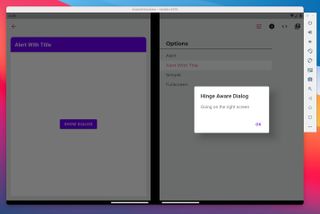Google and Microsoft are making foldable phones better by bringing new app development tools to Flutter

What you need to know
- Microsoft has announced support for foldable phones in Flutter.
- The new implementations make it easy for app developers to accommodate dual or folding displays.
- Google and Microsoft have been working together on bringing Surface Duo features into Android.
Foldable phones like the Samsung Galaxy Z Fold 2 are no doubt an impressive step forward for smartphones, but there are still plenty of things to iron out before they can become more mainstream. Aside from the price, which is often staggering, full app compatibility is still lacking, whether it's on the best foldable phone or dual-screen devices like the Microsoft Surface Duo. Fortunately, Microsoft has been working with Google on improving the dual-screen experience, which will benefit not only its own foldable but future devices as well like the rumored Samsung Galaxy Z Fold 3. Today the companies are announcing the first steps towards improving app compatibility with new Flutter support.
Flutter is a cross-platform framework that lets developers build apps for both iOS and Android using a single codebase. With Microsoft's contributions, the framework will soon support different types of foldable phones. Identifying the different variations of foldable phones is an important part of the new feature, such as phones with a hinge separator or those with just a crease to separate the different parts of a single display. These are referred to as "display features" and will allow developers to input properties such as information about a phone's hinge.

With this information, Flutter will allow developers to avoid the hinge for certain app elements like dialogues. It will also adapt app layouts by prioritizing displays, automatically rebuilding the app if the device is folded, for example. A new TwoPane widget will also better scale apps better by identifying the available space on a device. A single-screen smartphone will display one "panel" for example, while a dual-screen device will display a second panel next to it. For more information on the specifics of these implementations and how they'll work, you can check out the announcement on Microsoft's developer blog.
With Microsoft's contributions to foldable and dual-screen support on Android, as well as the improvements that Google is likely making with Android 12, the future for these devices is brighter than ever.
Be an expert in 5 minutes
Get the latest news from Android Central, your trusted companion in the world of Android

Derrek is a long-time Nokia and LG fanboy who loves astronomy, videography, and sci-fi movies. When he's not working, he's most likely working out or smoldering at the camera.
